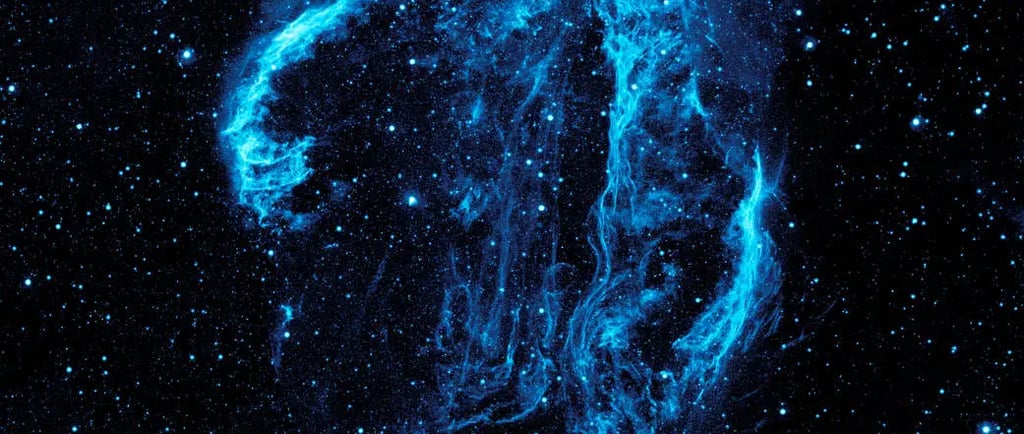The Cygnus Loop Nebula


Introduction to the Cygnus Loop Nebula
The Cygnus Loop Nebula, a fascinating astronomical phenomenon, is situated approximately 1,500 light-years away from Earth. This striking remnant of a supernova explosion has captivated the attention of astronomers and stargazers alike. The celestial structure we observe today is the result of a massive stellar explosion that occurred between 5,000 to 8,000 years ago.
The Significance of Its Size and Structure
Stretching three times the size of the full moon, the Cygnus Loop Nebula is an awe-inspiring sight in the night sky. It occupies a prominent position next to the wings of the constellation Cygnus, often referred to as the Swan. The enormity and complexity of this nebula provide a unique opportunity for scientists to study the remnants of stellar death and the processes that lead to the creation of such cosmic marvels.
A Closer Look at Its Origins and Composition
The origins of the Cygnus Loop can be traced back to the life cycle of a massive star. When the star reached the end of its life, it underwent a catastrophic explosion, ejecting its outer layers into space. This event shaped the nebula we observe today, characterized by intricate filaments of gas and dust that glow due to the ionization produced by the energy released during the explosion. As a result, the Cygnus Loop has become a key focus for studies on supernova remnants, enriching our understanding of stellar evolution.
Additionally, the nebula is rich in various elements produced during the supernova event, including oxygen, carbon, and nitrogen. The redistribution of these elements into the interstellar medium plays a vital role in the formation of new stars and planets, highlighting the cyclical nature of stellar evolution.
The study of the Cygnus Loop Nebula serves not only as a glimpse into our universe's past but also emphasizes the interconnectedness of cosmic phenomena. By examining supernova remnants like the Cygnus Loop, astronomers can gather valuable insights into the life cycles of stars and the fate of our galaxy.
In conclusion, the Cygnus Loop Nebula presents a remarkable example of a supernova remnant that continues to influence our understanding of the cosmos. Its expansive size, captivating structure, and the monumental event that created it draw both amateur astronomers and scientists to explore its depths. As we continue to gaze into the heavens, the mysteries of the Cygnus Loop serve as a poignant reminder of the fleeting yet spectacular nature of stellar existence.
